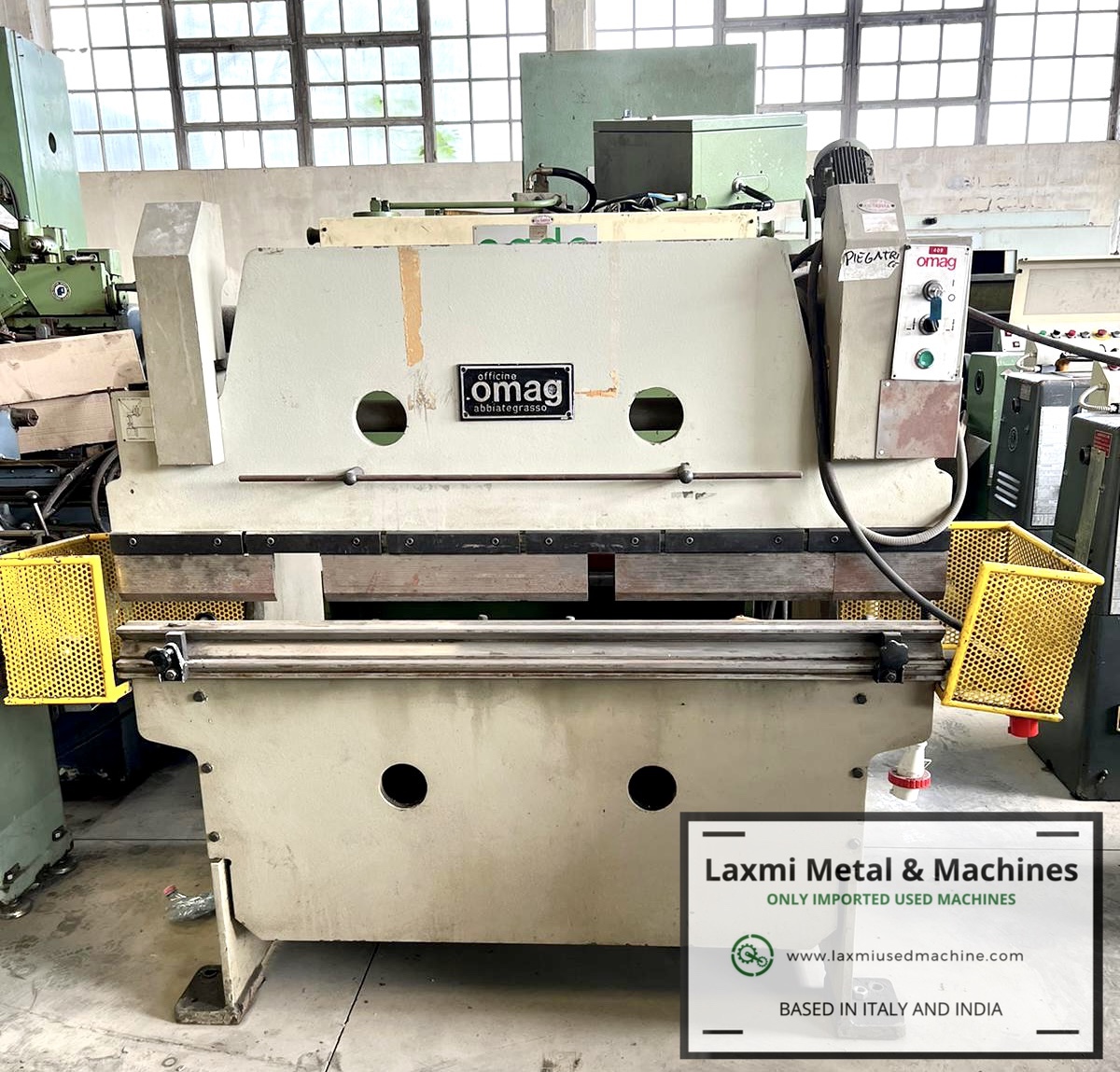Bending machines are an essential tool in the metalworking industry, used to bend sheet metal into various shapes and sizes. These machines come in different types and sizes, each with its own unique features and capabilities.
Let’s take a look at the bending machines that Laxmi can offer and at the differences between each type and model.
Types of bending machines
One of the most common types of bending machines is the press brake. This machine uses a hydraulic system to bend sheet metal by pressing it between a punch and a die. Press brakes come in various sizes, with the largest ones capable of bending sheet metal up to several meters long and several centimeters thick.
Press brakes are often used in the fabrication of metal structures, such as frames, enclosures, and panels. They can produce bends at different angles, and some press brakes even have the ability to create complex shapes with multiple bends.
Another type of bending machine is the roll bender. This machine uses three rollers to bend sheet metal into a curved shape. The sheet metal is fed through the rollers, which are adjusted to produce the desired radius of curvature. Roll benders are commonly used in the production of cylindrical objects, such as pipes, tubes, and tanks.
Roll benders come in various sizes, with the larger ones capable of handling sheet metal with thicknesses up to several centimeters. They can also be equipped with additional features, such as digital readouts and motorized rollers, to increase their accuracy and efficiency.
A third type of bending machine is the tube bender. This machine is specifically designed for bending pipes and tubes into various shapes and sizes. Tube benders can be either manual or automatic, with automatic machines typically being used in high-volume production environments.
Tube benders come in various configurations, including mandrel and roll benders. Mandrel benders use a mandrel, or rod, to support the inside of the pipe or tube during the bending process, while roll benders use a series of rollers to bend the pipe or tube into shape.
In addition to these types, bending machines can be equipped with a Computerized Numerical Control (CNC), to ensure a high level of automation and precision.
Number of axes
Bending machines can have different numbers of axes depending on their specific design and capabilities. However, the most common types of bending machines used in metalworking typically have three to six axes.
A basic bending machine may have three axes: X, Y, and Z. The X-axis controls the movement of the back gauge, which supports the material being bent. The Y-axis controls the vertical movement of the bending beam, while the Z-axis controls the horizontal movement of the bending beam.
More advanced bending machines may have additional axes, such as an R-axis for controlling the radius of the bend, a C-axis for rotating the material being bent, or an A-axis for controlling the angle of the bend.
Some very specialized bending machines may have even more axes, such as those used for bending complex shapes or parts with multiple bends. These machines may have up to ten or more axes to achieve the required precision and complexity of the bends.
Note that CNC bending machines can automatically control any number of axes.
Applications and benefits of bending machines
Bending machines are used in a wide range of industries, including automotive, aerospace, construction, and manufacturing. They are used to create a variety of products, including structural frames, enclosures, ductwork, and piping systems.
The benefits of using bending machines include increased efficiency, accuracy, and repeatability. Bending machines can produce consistent bends at precise angles, ensuring that each part is identical to the next. This level of precision is difficult to achieve using manual bending methods, which can vary depending on the skill level of the operator.
Bending machines also offer increased efficiency, as they can produce bends quickly and with minimal setup time. This is especially true for automated bending machines, which can produce thousands of bends per hour with little to no operator intervention.
When choosing a bending machine, it is important to consider factors such as the size and thickness of the sheet metal being used, the desired radius of curvature, and the required level of precision. Other factors to consider include the machine’s capacity, speed, and versatility.
In addition to the type of bending machine, other accessories may be required to produce certain types of bends. For example, a mandrel may be required for mandrel bending, or a special set of dies may be required for creating specific shapes.
It is also important to properly maintain bending machines to ensure their longevity and performance. Regular cleaning, lubrication, and calibration can help prevent wear and tear, and regular inspections can help identify any potential issues before they become major problems.
That’s why every used bending machine that Laxmi can offer is carefully selected, overhauled and renewed, to offer our clients a product that can last many years. We can offer you bending machines made by the best brand in the trade, such as:
- Omag;
- Fanuc;
- Siemens;
- Fagor;
- and more.
In addition, we provide assistance at every stage of the sale process, guiding you during the choice of the bending machine that suits your necessities best. Contattaci for more informations by calling +91 9896105058 (India) or at +39 3487338048 (Italy), send us an e-mail at info@laxmiusedmachines.com or use our online chat.


